Have you ever experienced pain in the back of your ankle? If yes, then it could be an Achilles tendon.
While there is no specific reason for this pain, it can crop up anytime while walking or climbing a mountain. But don’t worry there is always hope!
We have got for you some amazing solutions that can help you manage Achilles tendon pain and recover from the injury quickly.
So, whether you have been dealing with this pain for a week or it’s been months, you can try out my suggestions, and see the difference.
In this blog, I’m discussing everything about Achilles pain and Achilles tendon popping injury, also covering tips for recovery.
So, buckle up, and let’s get started.
Understanding Achilles tendon injury
An Achilles tendon injury can happen to anyone. Whether you are an athlete or just performing your daily life tasks, the concern can trouble you. To understand the Achilles tendon better, let’s take a look at the following pointers:
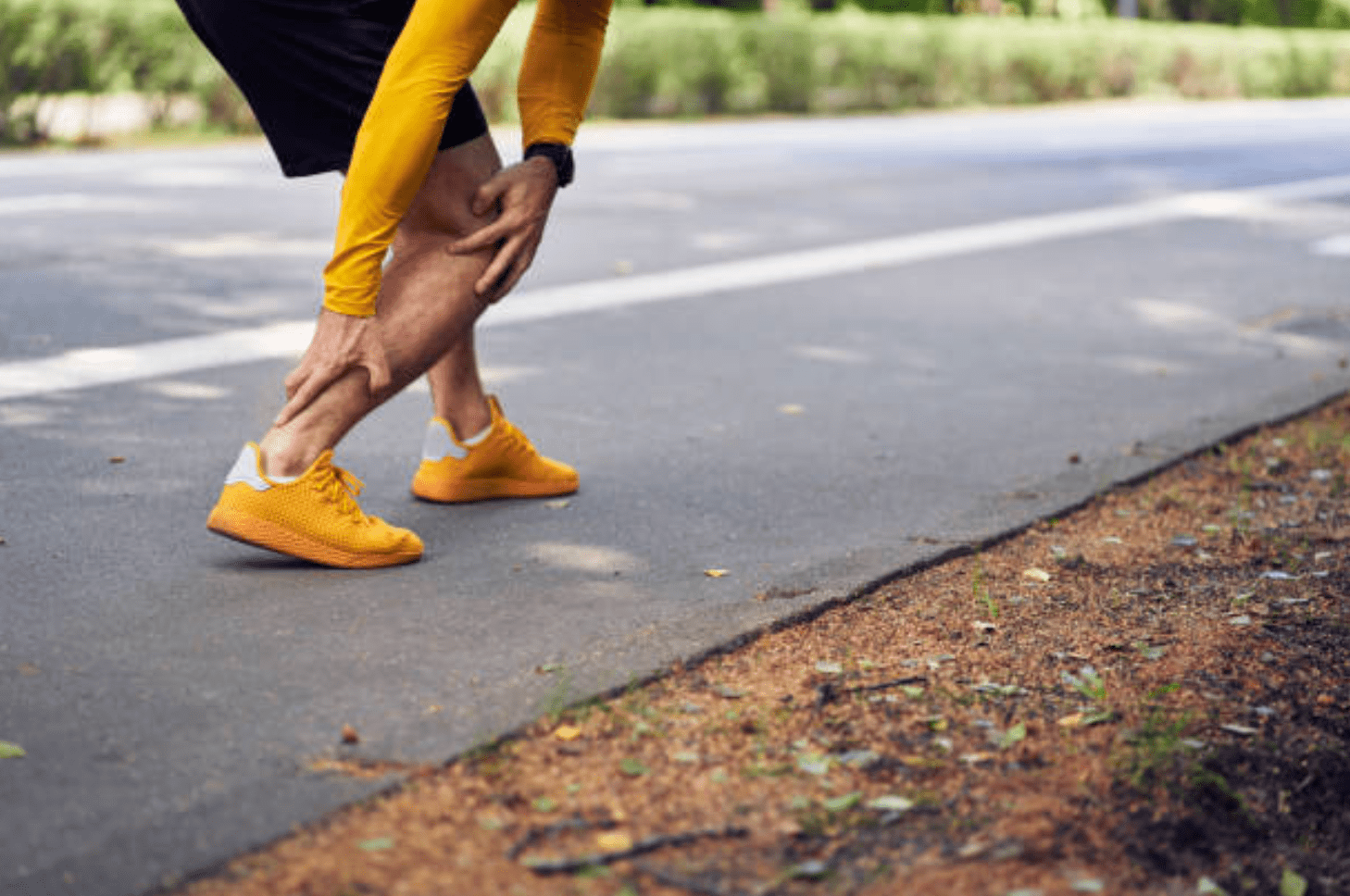
- The Achilles is the largest tendon in the human body. It stretches from the bones in your heel to your calf muscles.
- The Achilles tendon is like a springy band of tissues, located at the back of your ankle and above your heel.
- It allows you to point your toes toward the floor and raise and balance yourself on tiptoes.
- The dense fibers in your Achilles tendon make it strong and enable it to sustain a force of 1100 lbs (nearly 498 kgs).
- However, this part of the leg doesn’t enjoy heavy blood flow.
- Apart from that, the Achilles tendon is often prone to injuries leading to severe pain. In the medical terminologies, this condition is also called tendinitis or tendonitis.
- Dealing with an Achilles tendon injury may make you feel a burning sensation or stiffness in the lower portion of your leg. Also, if, in case the pain is severe, your Achilles tendon might be partly or completely torn.
How do Achilles Tendon Injuries Happen?
An Achilles tendon injury may happen for a variety of reasons. Let’s explore some of the primary factors that can attract such concerns.
Tendonitis
One of the primary causes of Achilles tendon injury is tendonitis but there are two types of it:
Tendonitis might happen due to excessive use or damage to the area. As, a result it can cause you pain at the back of your leg and around your heel.
You might even notice that these parts are getting thicker and harder. This primarily happens because of tendonitis. And, this will get even worse if you don’t treat it. So, here are two main types of tendonitis. They are as follows:
Insertional Achilles Tendonitis
In insertional Achilles, tendAchilleshe damage occurs in the same spot where your tendon connects with your heel bone.
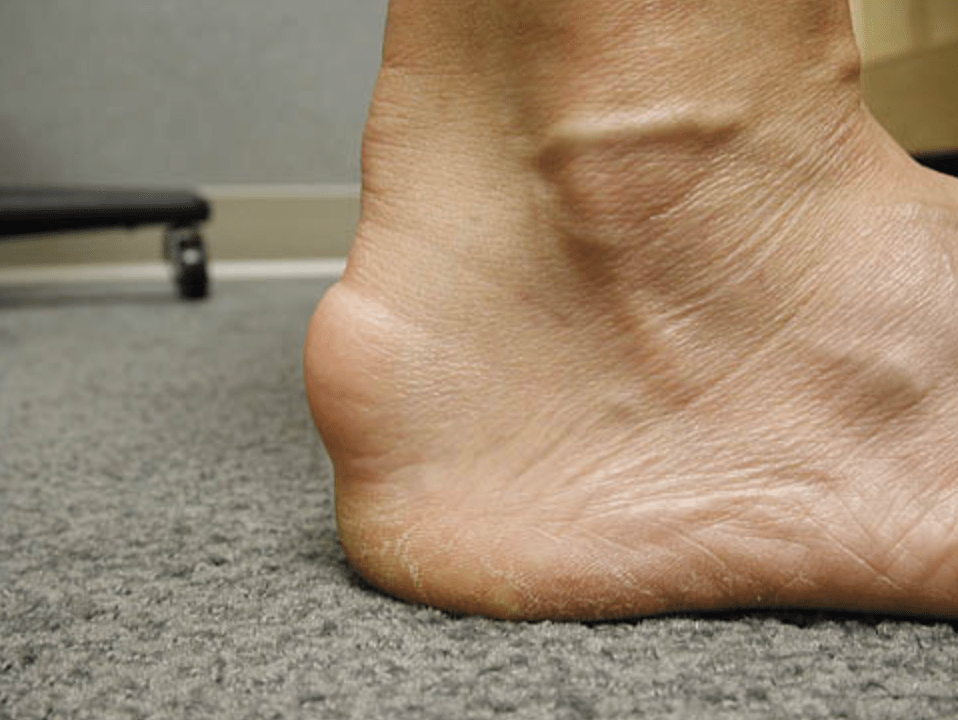
As, a bone spur which means growth of extra bone might happen. This type of tendonitis can happen to anyone at any age and even to people who are not too active.
Non-insertional Achilles tendonitis
When there are some tears in the middle of your tendon then it starts to break it down.
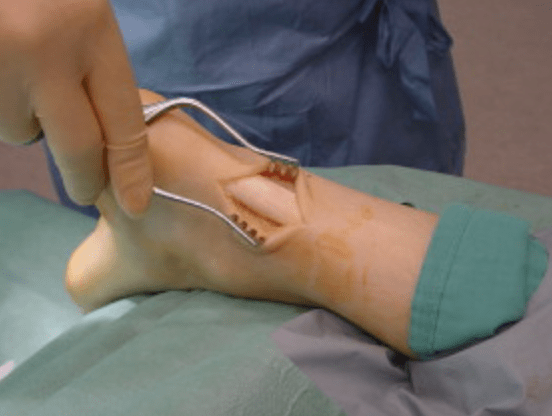
This results in pain and swelling. And, this type of tendonitis is mostly seen in people of younger age groups or people who are active.
Rupture
The second most common cause of Achilles tendon injury is Rupture. The tears in your tendon fibers can cause a partial or complete break or tear in your tendon.
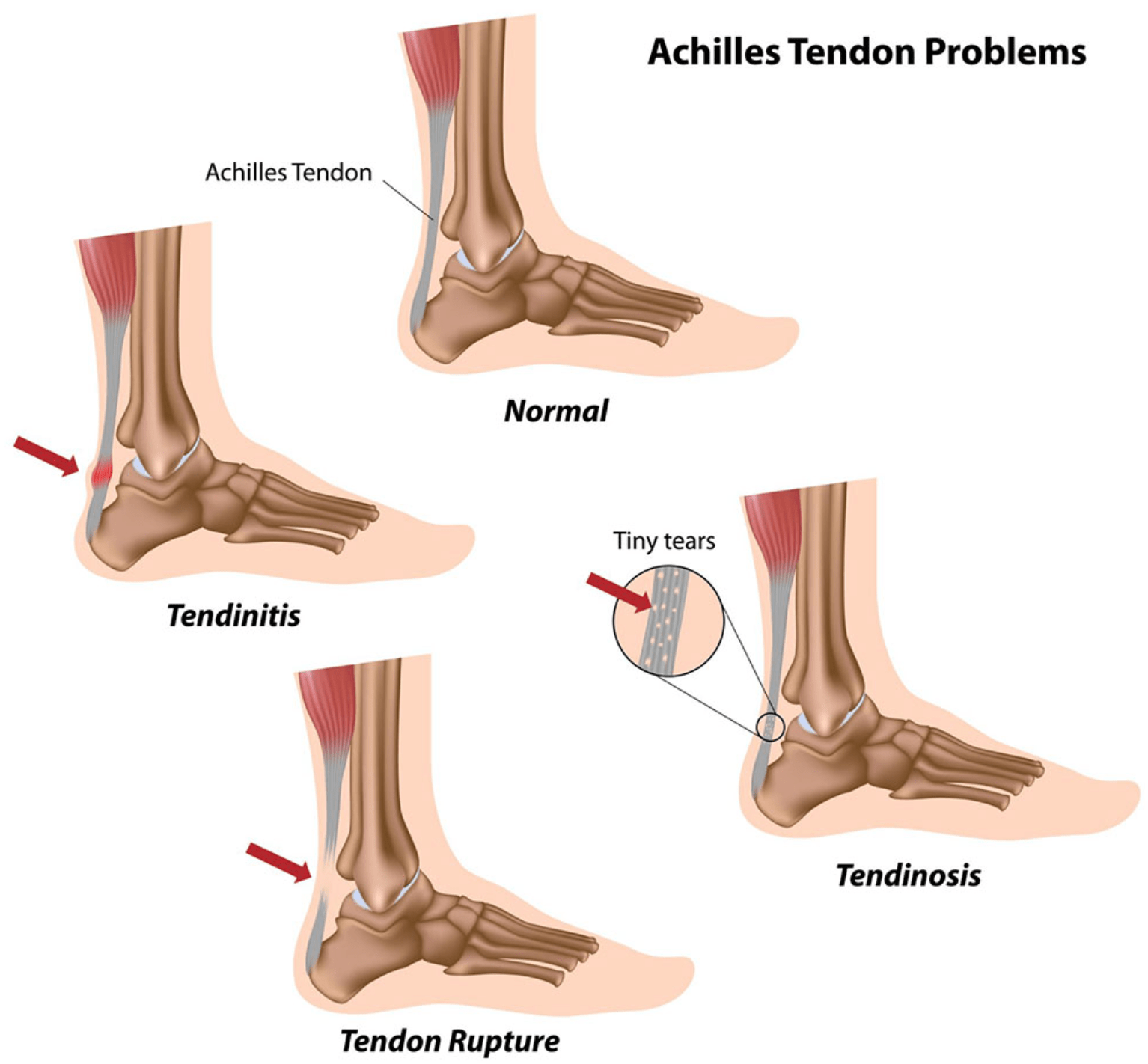
You might hear a pop that might come from the back of your calf or heel and this might be a tendon rupture.
But if you notice anything such then it requires immediate medical attention from an expert professional.
There is no specific reason for this injury to happen at any time, there is no specific reason or it.
You can also injure your Achilles tendon if you continuously stress it over again and again with high-impact activities. And, these are known as repetitive stress injuries. You don’t need to be an athlete with this kind of injury. If you accidentally step into a hole you can end up rupturing your Achilles.
Symptoms of Achilles tendon injury
Here, are the common symptoms of tendon injuries. They are as follows:
- You will experience pain at the back of your leg or near your heel.
- The pain gets heavy and worse when you are walking or doing any other physical activity.
- Whenever you get up you will experience a stiff and sore Achilles tendon.
- Pain in the tendon after performing exercise.
- Swelling along with pain will get worse as you are active throughout the day
- Tendon thickening.
- Symptoms may include bone spurs on the heel bone
- Struggle while flexing the affected foot
- A “pop” sound and sharp pain indicate a ruptured tendon.
Diagnosing Achilles tendon injury
Sometimes you and your doctor can mistakenly consider an Achilles tendon injury as a sprained ankle.
To make the right diagnosis your doctor will perform a physical examination. They might ask you to walk or run so they can examine and look for a key cause that might have led to the injury.
They might also perform a calf squeeze test. In this test, the doctor will gradually squeeze the calf muscle on your healthy leg.
This will stretch and pull on the tendon and make your foot move. Now, they will repeat the same steps on your other leg.
If your Achilles tendon is torn then your foot will not move because your calf muscle is connected to your foot.
Your doctor might test you with several methods and check if you can move your ankle the way it should.
They might also perform imaging tests such as an X-ray scan or MRI. These tests will indicate what kind of tendon damage you have and will help them to decide the best treatment for you.
Top 8 home remedies to fix Achilles tendon injury
Many people have a question can we treat Achilles tendon injury at home? So, the answer is yes, and here are the effective home remedies that will effectively treat your pain.
Resting
Achilles tendon injuries mainly happen due to excessive stress on the muscle. So, giving appropriate rest is an effective self-care solution for reducing pain.
Give your Achilles tendon some rest and avoid activities such as climbing stairs, and running which put too much strain on the tendon.
I would recommend you swim during this time and have patience because Achilles tendon pain takes some days or weeks to heal.
Castor oil
Castor oil can help you in healing Achilles tendinitis. This oil primarily consists of ricinoleic acid which acts as an anti-inflammatory agent. One should apply castor oil near the pain site at least 2-3 times a day. This will help you get relief from pain and minimize the inflammation of the tendon.
Icing
Applying ice packs for at least 15-20 minutes will heal your Achilles pain. This will enhance your blood flow and instantly bring down the pain.
Gentle massage
A Gentle massage to the affected area will help to increase blood circulation and lower the pain. I also suggest you perform gentle stretching exercises and calf stretches are the best exercise.
Wear protective footwear
I suggest you wear athletic shoes that support the arch of your affected foot. This will act as cushioning for your heel.
These types of shoes will help the Achilles tendon to heal. You can try using silicone heel pads and they provide good results in lowering your pressure on the Achilles tendon.
Use warm wraps or elastic bandages
You can use warm wraps or strong elastic bandages which will reduce the stress on the affected muscles. As a result, it will lower the pain and swelling which will help speed up the healing process.
Vitamin E oil
Vitamin E oil can significantly work as an antioxidant. It helps in getting relief from inflammation and pain by cleaning up free radicals from the body. These radicals are the key reasons to cause pain.
The oil also helps in better circulatory functions which reduces soreness and inflammation.
No Tobacco
Consuming tobacco can hinder healing by reducing blood supply to affected tissues and delaying tissue repair. Hence, quitting smoking and tobacco products can help reduce tendon pain and promote faster healing.
Thus, these are simple and effective remedies that will heal your Achilles pain at home.
How can you recover from an Achilles tendon injury?
Achilles tendon injury cannot be recovered in one day. And during this healing process, you can’t perform all your daily activities.
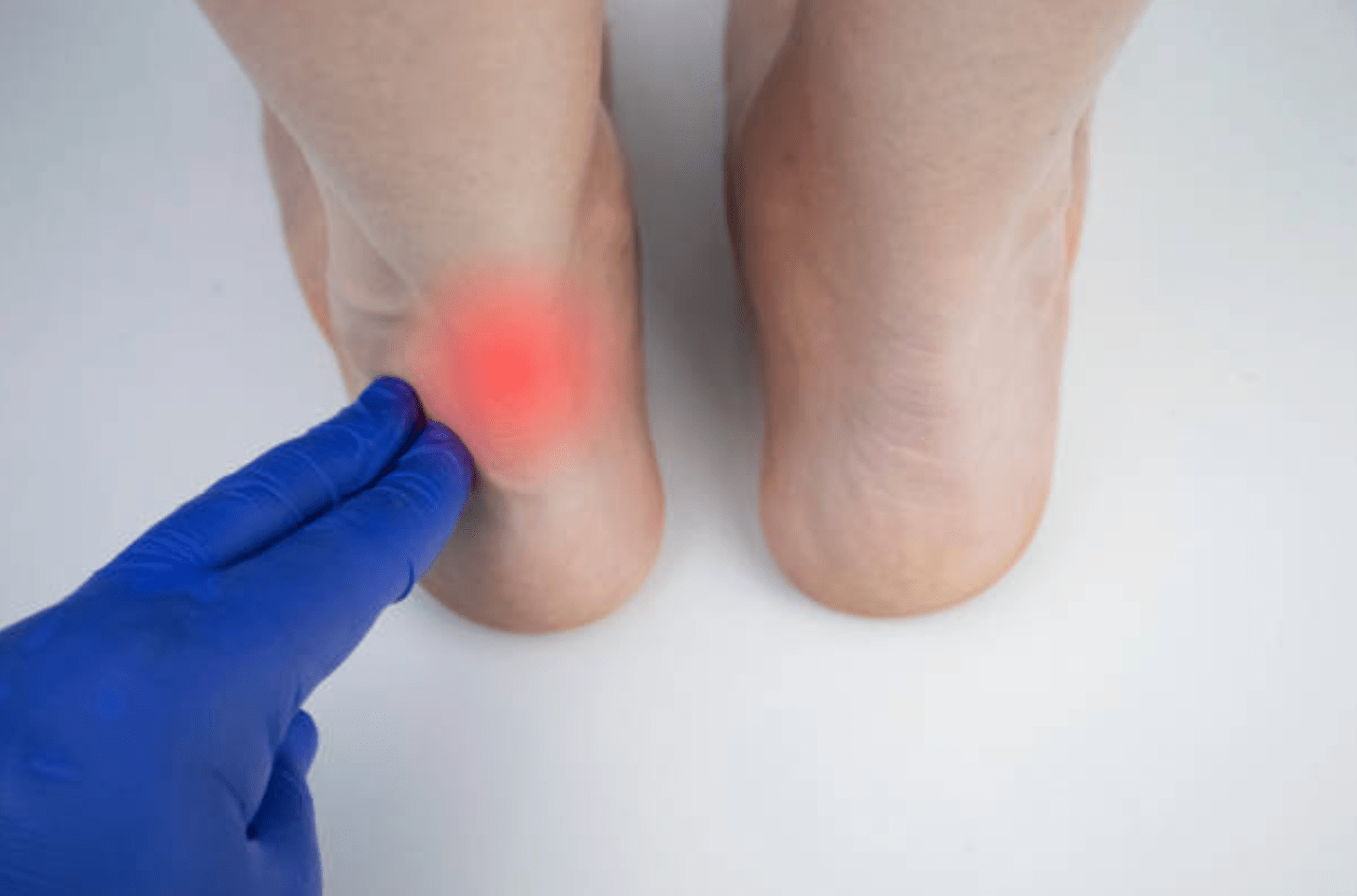
Tendinitis involves pain and discomfort and it might take a few weeks to recover. Simultaneously, if there is a complete rupture then it might take a year to recover.
Some people may require surgery to fix their Achilles ruptures, while others may heal on their own. The recovery time varies according to the severity of the injury.
Non-surgical solution
If your Achilles tendon is not torn, surgery is usually not suggested. Minor damage can often be treated with rest, ice, wearing a boot for a period, and engaging in physical therapy sessions for recovery.
One of the best non-surgical solutions is functional bracing where your leg is placed in a walking boot.
This boot consists of a wedge in it which will stabilize your lower leg.
This treatment method will fix your Achilles within 6 to 12 weeks. But, you might need to wear heel-lift shoes afterwards and sometimes require physical therapy.
Surgical solution
The typical procedure is to repair the torn tendon by making an incision in the back of your lower leg. It might use other tendons to reinforce the repair. Infection and nerve damage are two possible complications with lower infection rates compared to open surgeries.
Physical therapy
Physical therapy consists of exercises, stretches and other techniques that will get you back on your feet.
Recovery through physical therapy (PT) may vary in duration depending on the severity of your injury. It could take several weeks to months to fully address the issue. The objectives of physical therapy are as follows:
Pain relief: Your physical therapist might use ice or recommend you wear a leg brace. Sometimes a physical therapist might give you an ultrasound therapy and use other techniques that will ease your pain.
Muscle strength and balancing: Having weak muscles or muscle imbalance can impact your Achilles tendon. Your physical therapist will suggest you some special exercises that will specifically focus on strengthening your knees and hips.
Appropriate movement: Difficulty in moving your ankle, foot, or knee joints can put a strain on your Achilles tendon. A physical therapist may suggest exercises or hands-on techniques to relieve tension and address these concerns.
Note: Remember physical therapy shouldn’t be painful and the exercises should not be uncomfortable.
Extracorporeal shockwave therapy
High-energy shockwave impulses help in the healing of the damaged tendon tissue. This treatment is rarely used, but in some cases, your doctor may suggest you.
How can you manage your Achilles tendon injury?
Here are the steps that can help you in managing your Achilles tendon injury. They are as follows:
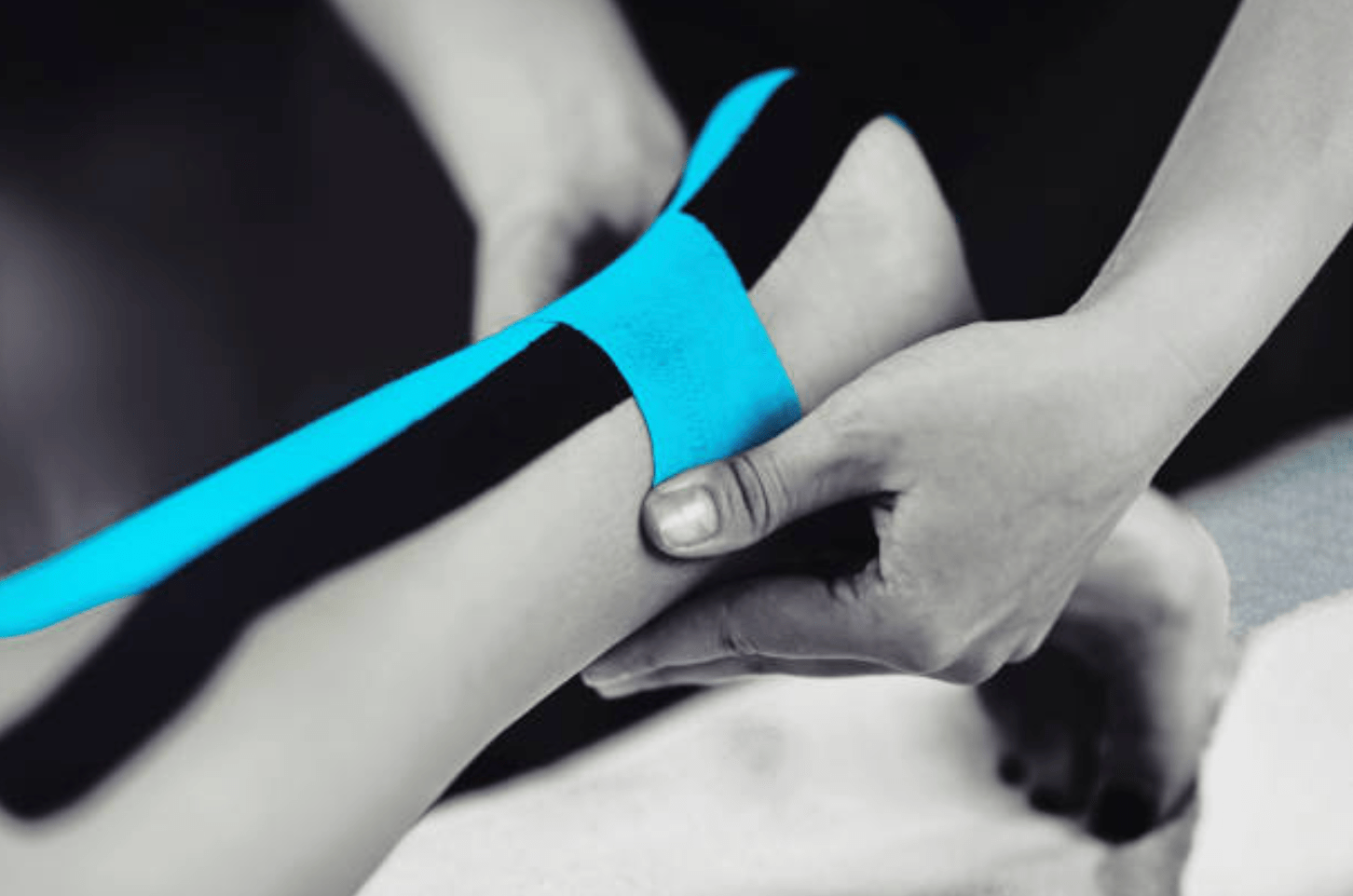
- Firstly, it is important to follow the medications and recommendations suggested by your doctor.
- Get appropriate rest and manage the pain and swelling
- Always look for alternative ways to be active.
- Try to perform low-impact activities like swimming which will not create pressure on your tendon.
- Consult your doctor if your current pain and swelling management techniques are ineffective.
How can you prevent Achilles tendon injuries?
You can perform these steps which will help you in preventing injury to your Achilles tendon:
- Always warm up before doing exercise or before playing any sports or repetitive movements
- Start your activity slowly and gradually increase its pace rather than doing it all at once.
- Wear the right shoes with the correct size for your activities.
- Do not exercise on uneven or hard surfaces.
- Immediately stop activities that cause pain.
- Be cautious while using fluoroquinolone drugs due to their potential risks.
Overcoming Achilles Tendon Injury
Learning about Achilles tendon injuries can help you take control of your recovery. This post explains the causes, symptoms, and ways to manage the injury effectively.

Remember that healing from Achilles tendon injuries requires patience. And the most important thing is to listen to your body and adhere to your doctor’s instructions.
By implementing preventive measures and lifestyle changes such as proper warm-up routines and appropriate footwear, you can significantly reduce your risk of Achilles tendon injury in future.
So, when you begin your recovery journey, keep in mind that you are not alone. Seek help from healthcare professionals.
With commitment and determination, you can overcome Achilles’ pain and get back to your daily routine life.